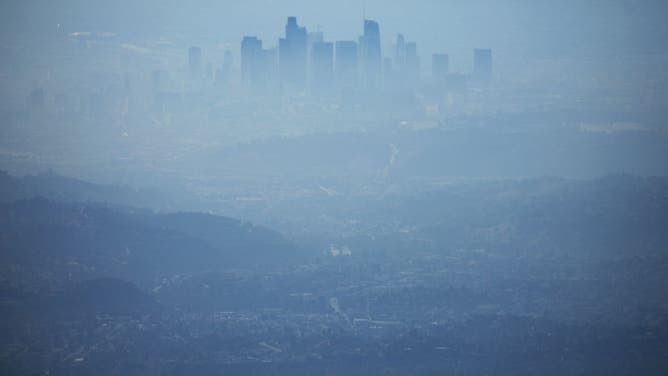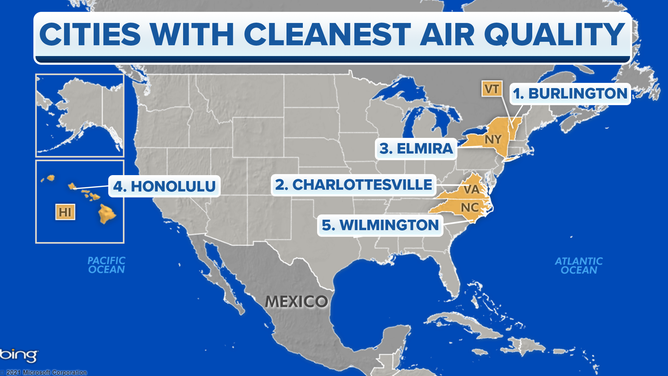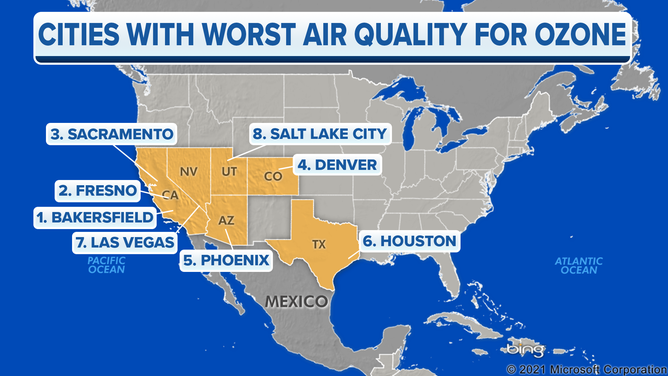Air Quality: Who has the Best & Worst?
Air quality can vary through the year -- be it due to the season or the topography (or both) but some places are just blessed -- or cursed -- with local factors that can have long-term effects on their air pollution.

The buildings of downtown Los Angeles are partially obscured at midday on November 5, 2019 as seen from Pasadena, California.
(Mario Tama/Getty Images)
Air quality can vary through the year -- be it due to the season or the topography (or both) but some places are just blessed -- or cursed -- with local factors that can have long-term effects on their air pollution.
We asked chemistry professor Joost de Gouw with the University of Colorado at Boulder which areas in the nation have the best and worst air quality.
So, who rates best?
"I thought about this for a long time, so my number one answer is Hawaii in the middle of the Pacific Ocean," de Gouw said. Indeed, data from the American Lung Association backs that up, naming Honolulu and Lahania among the top cleanest cities for year-round pollution. And it would make sense since it's surrounded by clean water, so the winds blow in clean air no matter their direction.
"It's a pretty clean place unless, of course, you have volcanic emissions. They can really affect the people there," he said.
What about the Lower 48?
"I would say the Pacific Northwest," he said. Again, a cooler climate with a typical ocean breeze keeps the air pretty clean. However, that changes when wildfires are raging, and smoke can pour particulate matter into the region. The late summer of 2020 featured hazardous air quality over the area for days due to multiple wildfires.
The American Lung Association rates Bellingham, Washington, as No. 7 on its cleanest for particle pollution.
But the other corner of the nation rates well too.
"I would also point towards Florida," de Gouw said. "The air in Florida often comes from the Atlantic Ocean, and it can be quite clean there."
Overall, the American Lung Association rates five cities as its top overall for clean air: Burlington, Vermont; Charlottesville, Virginia; Elmira, New York; Honolulu, Hawaii; and Wilmington, North Carolina.

And on the (cough) flip side…
As for which cities rate the worst? Southern California has a smoggy reputation, and there's a good reason. Los Angeles indeed ranks dead last for air quality.
"Los Angeles has this great combination of a geography to trap pollution, great weather and lots of emissions from all the motor vehicles," de Gouw said. "But the state of California has really led the way in how to address these issues, and they've made a lot of progress."
Other worst cities by ozone pollution are mainly in the heat-cooked West and Southwest, including Bakersfield, Fresno, Sacramento and San Diego in California, along with Phoenix, Denver, Houston, Las Vegas and Salt Lake City.

Actually, Salt Lake City can get lousy air quality in both the summer and the winter.
"In terms of fine particles, a lot of the worst problems are in the winter, actually," de Gouw said.
Blame our attempts to stay warm. When the ground cools on clear, calm nights, that cold, heavy air won’t budge, leaving an "inversion" where warmer air sits perched atop the colder air, creating a lid.
Meanwhile, wood fireplaces send smoke particulate into the stagnant air that remains trapped at lower levels, increasing the pollution near the ground and sometimes triggering burn bans in populated areas.
"So Salt Lake City has a haze problem in the winter. The California Central Valley is an area that has a fine particle problem in the winter. And then (as we) move over towards the East Coast, the urban corridor; New York City, Philadelphia, Boston can have some pretty grim days in terms of air quality as well."